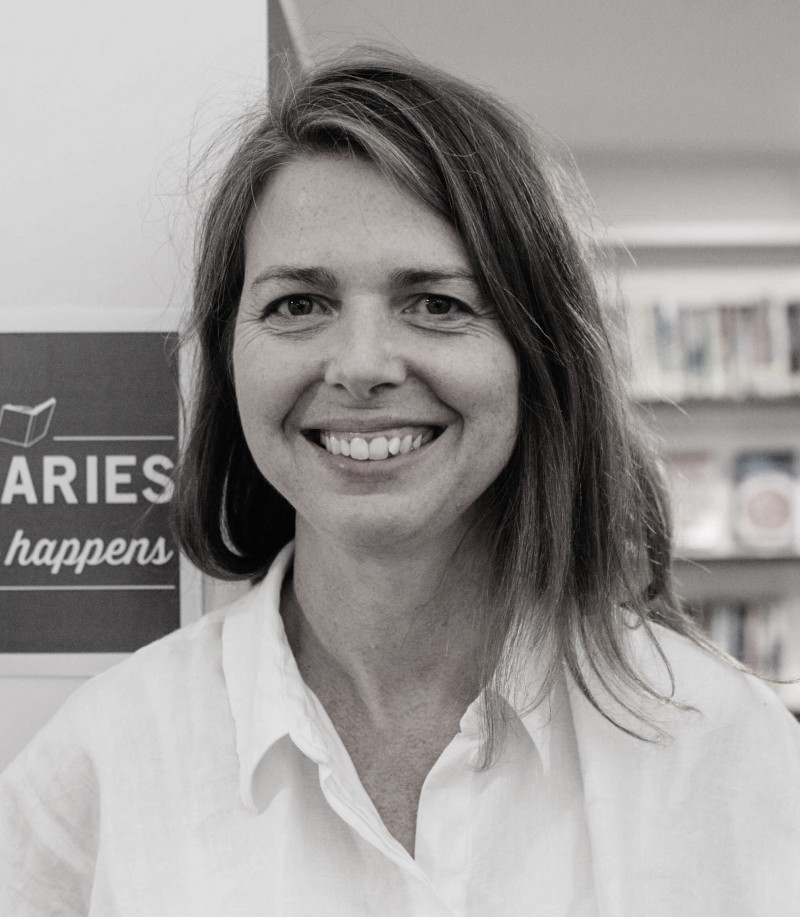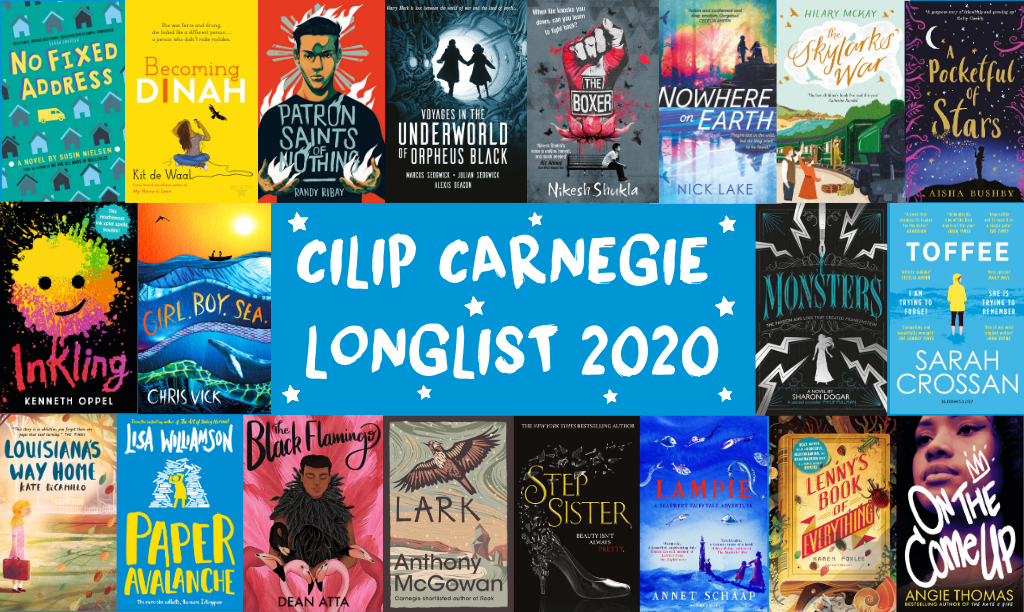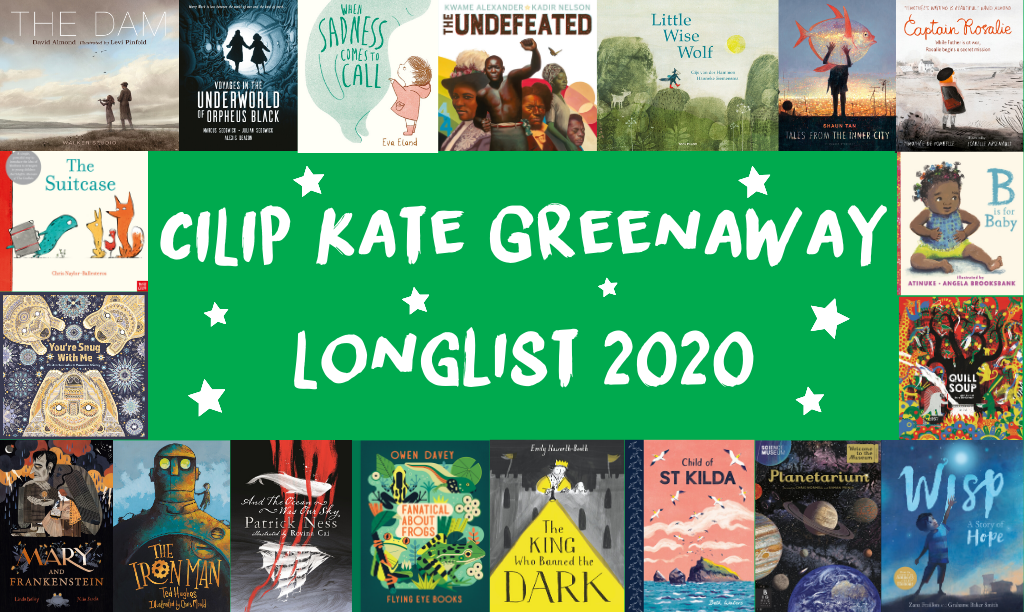Please note: We will continue to deliver your books and furniture until Thursday 18 December for schools, and Tuesday 23 December for public libraries. We will then close for the Christmas break, with deliveries resuming from Monday 5 January 2026. We wish all of our customers a very merry Christmas and a Happy New Year!
For help, advice and telephone ordering call our team on 0121 666 6646
Are you sure you wish to delete this basket?()
This action cannot be undone.
Sorry, something went wrong
Please report the problem here.
Chair of Judges, Julia Hale, discusses the 2020 CILIP Carnegie and Kate Greenaway longlists

February 20th 2020
After a seemingly interminable winter of waiting it feels like a portent of spring’s arrival, as it gives me much pleasure and pride, to finally be able to share with you the 2020 longlists for the CILIP Carnegie and Kate Greenaway medals! Congratulations to the illustrators and authors who have made it to this stage of the UK’s oldest children’s book awards, chosen by a panel of fourteen librarian judges from across the country and home nations.
2020 was the first year of a new nomination procedure for both awards, reducing the number of books eligible to be put forward for consideration by CILIP members from two titles to just one for each of the Medal categories of writing (Carnegie) and illustration (Kate Greenaway). Everyone who received a nomination should therefore be justly proud; there book is a precious and considered choice from a professional librarian. Although the total amount of nominations dropped from the epic 254 books of last year to ‘just’ 162, the judging experience was no less arduous and all-consuming for our volunteer judges, who give so much of their time and themselves to the process and ensure the ongoing legacy of these prestigious awards.
This year also marks the pilot for the revised criteria for the CILIP Carnegie medals for writing, focusing on an “outstanding reading experience”. It asks judges to reflect on experience and representation in each work, the treatment of characters and plot and the potential resonance with its readership. We are thankful to Inclusive Minds’ Ambassadors who have helped to ensure different perspectives from young voices continue to be heard throughout the course of the awards.
We are delighted that both longlists feature several debut publications alongside some more familiar names and previous winners as well as books in translation. Reading a large amount of wonderful books over a relatively short period of time has been such an encouraging experience. By taking a ‘health check’ of children’s publishing today, not just those books of UK and US origin, but from around the world, it is inspiring to see the depth and range of what is available for children to choose to read. This is in harmony with the awards’ wider aims to connect with as broad a range of young readers as possible.
Across the fields of poetry, nonfiction, graphic and verse novels and illustrated literature, whether creating books for babies, middle grade readers or emerging adults; authors and illustrators are continuing to push artistic boundaries and proving their determination to produce the very best for children and young people. They deserve no less than that and I hope you are as excited and delighted by the forty books on these exceptional longlists as we are.
Carnegie

It is becoming something of a tradition for the Carnegie longlist to celebrate the huge range of styles and subject matters that abound in contemporary writing for children and this year is no different. There is a thriving variety of genre and form and each longlisted title has a unique and distinctive voice. Although some contemporary subjects seem very much of our time, similar concerns for children and young people echo through every generation of nominations. Not surprisingly family and friendships have always featured strongly on previous longlists and continue to figure today.
Paper Avalanche is a deeply compassionate portrait of fourteen year old Ro surviving with her compulsive hoarding mum. Lisa Williamson’s care for her characters and audience makes a difficult subject readable and relatable as does Canadian author Susin Nielsen. Both witty and wise, No Fixed Address describes Felix and his mother living precariously in a campervan, part of Vancouver’s hidden homeless, keeping the truth secret and hope alive. The mother daughter relationship is movingly observed in Aisha Bushby’s heartfelt and impressive debut A Pocketful of Stars whilst Anthony McGowan returns to the Carnegie longlist with an emotionally wrought fourth and final exploration of the fraternal bonds binding Nicky and Kenny in the beautifully rendered Lark.
The relationship between older sister and younger brother are front and centre in Nick Lake’s Nowhere on Earth. This is a thrilling, thought provoking ride, part survivalist drama, part science fiction that takes numerous twists and turns with your head and your heart. A sibling dynamic also runs through Karen Foxlee’s glorious Lenny’s Book of Everything, an exemplary novel encompassing fractured family and terminal illness that perfectly balances humour, charm and tragedy. Judges were both smitten and heartbroken.
Another empathetic look at the life of a young carer is previous Carnegie medal winner Sarah Crossen’s compellingly touching verse novel Toffee. In offering Marla (who suffers from Alzheimer’s) far more kinship and comfort than her blood relatives, runaway Allison receives an unhurried and unforeseen friendship in return.
The cross cultural relationship between Berber refugee Aya and English schoolboy Bill, Girl. Boy. Sea., is forged adrift on the high seas and is one of even more urgent survival, as both battle the elements together in a spell binding tale from Chris Vick that grips readers from beginning to end. Mythical creatures from the deep are also at the heart of Annett Schaap’s enchanting Lampie. Translated from the Dutch by Laura Watkinson, this middle grade jewel about a lighthouse keeper’s daughter is by turns as satisfyingly dark and light as the best fairy story adventures. Appearing together on the Carnegie longlist for the first time the brothers Sedgwick (Julian and Marcus) go literally to the Underground; reworking Greek mythology to a World War II blitz setting and alternating between poetry and prose in the dark and moving Voyages in the Underworld of Orpheus Black, strikingly illustrated by fellow longlistee, for the Kate Greenaway Medal, Alexis Deacon.
Self-knowledge and discovery on the cusp of adulthood is the subject of several of the novels for older teens on this year’s longlist. Kit de Waal’s charismatic Becoming Dinah – a wildly original Moby Dick reimagining; and Dean Atta’s dazzling Black Flamingo − a show stopping debut novel written in verse; were hugely admired for their nifty exploration of relationships, identity and culture. Randy Ribay’s atmospheric Patron Saints of Nothing also examines the complexities of dual nationality, family ties and political turmoil in the present day Philippines to haunting effect.
Judges were left simultaneously bruised, reeling and uplifted by Nikesh Shukla’s brilliantly nuanced The Boxer, which confronts the aftermath of a racist attack in a punchy ten rounds, whilst in the hip hop ring of Angie Thomas’ On the Come Up, aspiring rapper Bri battles to escape poverty of her neighbourhood and the self-perpetuating stereotypes within a frequently exploitative and male dominated industry, ultimately finding her true voice.
Inkling is a brilliant achievement from Kenneth Oppell, describing Ethan’s attempts to help his father overcome his writer’s block after bereavement. This is a high concept exploration of the nature of creativity and authorship which hits the mark and more with humour, rich characterisation and pacy plotting.
Hilary’s McKay’s Skylark’s War, is also richly textured by memorable characters and incident, a book that you never want to end while reading and that stays with you a long time after putting down. Barely tolerated by her cold and distant father, Clarry Penrose and her young relatives regroup for golden summers at their Grandparent’s Cornish home whilst looking to find their place in a changing world that will be irrevocably shattered by the Great War.
Another emotional journey by a writer at the height of her powers is Kate DiCamillo’s Louisiana’s Way. The second part of the essential Raymie Nightingale trilogy, Louisiana’s ‘Granny’ is revealed to be not all that she seems. For a standalone novel with a young audience in mind, the sharp insights into character, use of language, and imagery is breath taking; here is an author who never talks down to her reader.
Sharon Dogar’s Monsters, an origin story for Frankenstien, is literary and narrative biography at its finest, famous and infamous figures of the Romantic Era are brought to life on the page. Rich in period and historic detail, it is staggering to be reminded that Mary Shelley lived it all whilst still a teenager herself.
There’s a distinctly feminist feel too in Jennifer Donnelly’s Stepsister, which picks up from the less than happily ever after of Cinderella’s extended family. Previous medal winner Donnelly brings far more than a predictable twist in the retelling however, this is a rich and fully realised fantasy world where both ‘ugly’ sisters must tussle with Fate and Chance to wrestle destiny into their own hands on their own terms with intelligence and bravery.
Greenaway

There really is something for all tastes and ages amongst the titles in contention for this year’s coveted Kate Greenaway Medal for illustration. The parallel themes of home and our place in the world are reflected in the breadth of a longlist of 20 titles whittled down from 71 nominations. They include artists originating from India, South Africa, Canada, Australia, Spain, and Holland, and feature two previous Kate Greenaway Medal winners and three debut picture books.
In And the Ocean Was Our Sky Rovina Cai’s exquisite depictions of whales battling monsters both of the deep and the imagination feel integral to the world building in Patrick Ness’ lyrical Moby Dick re-imagining. There’s a similar unsettling intimacy in the dreamlike visions of animals existing in an urban landscape in Shaun Tan’s exquisite Tales from the Inner City; an extraordinary collection of short stories that explore the nature of animal and human relationships. Man’s impact on the environment is also felt, albeit subtly, in Poonam Mistry’s picture book for the very young; shimmering, shivering Kalakamari inspired illustrations show Mama Bear and her cubs as they search the polar lands to find a place where You’re Safe With Me. Likewise Beth Water’s handmade printing techniques for her self-penned Child of St Kilda feel apposite and authentic in portraying the extremity and isolation of the last community to live at the edge of the world.
The wild landscape and sky of Northumbria and David Almond’s poetic text on resettlement provide a stunning backdrop to Levi Penfold’s poignantly nostalgic The Dam. Inspired by true events, the whole experience lingers in the mind like the final notes of music haunting the abandoned houses of a valley that will become a lake; simultaneously melancholy and hopeful.
Offering another trancelike state for older readers, are Alexis Deacon’s visionary, cinematic sketches from the Voyages in the Underworld of Orpheus Black. The poetry and prose of Julian and Marcus Sedgwick’s writing blend outstandingly with Harry Black’s dark hallucinatory journal drawings, as he travels through the nightmare of the London Blitz. Wartime is also the setting for Isabelle Arsenault’s delicate and understated Captain Rosalie. A crotchet quilt, blue writing ink and Rosalie’s red hair are colourful touchstones in the predominately black and white watercolours which are sensitively paired with the intimate scenes between mother and daughter sharing Papa’s final letters from the front.
There is a tradition of Greenaway books breathing new life into classics and Chris Mould reanimates Ted Hughes’ The Iron Man in a perfect pairing of Yorkshire legends; an essential text rendered approachable for today’s children by exceptional draughtsmanship and characterisation. Emily Hawarth illustrates her own fable of misuse of power in the politically resonant The King Who Banned the Dark; a remarkably effective debut utilising a predictably restricted colour palette with wit and panache. More shadows and murky shades are gorgeously employed by Hanneke Siemensma, working harmoniously with the folksy plot of Little Wise Wolf, the blushes of red of little wolf’s boots and the journey map endpapers are particularly pleasing reading experiences. By contrast, sunlight bounces off every page of B is for Baby, when it’s all aboard Angela Brooksbank’s deliciously bumpy bike ride; a vibrant celebration of loving family life in a West African village.
Although both former Greenaway winner Grahame Baker Smith (Wisp) and Daniel Egnaeus (Lubna and Pebble) bring differing perspectives to the subject of lives in refugee camps, each offer hope in the darkest of places, the illustrations in both works are luminous, literally glowing with optimism, and deserve to be widely shared.
Chris Naylor-Ballesteros’ The Suitcase can also be read on many levels, the use of colour in the text and white space aids reflection and discussion of a deceptively simple, ultimately emotional story about empathy and kindness to an unknown unnamed stranger. Meanwhile the visiting porcupine has the last laugh in the dazzling Quill Soup, after initially being shunned by the hoarding animals of the bounteous village who refuse to share their resources in this familiar cautionary tale. Dale Blankenaar’s stunning use of colour, endpapers and the textured cover evoke South African textiles and reveal a sophisticated level of detail that reward repeated readings.
Eva Eland’s When Sadness Comes to Call is also perfect for sharing, the spare uncluttered illustrations employ a three colour palette to personify an emotion which only grows bigger if it is ignored. Offering effective strategies for recognising and managing a familiar mood, the whole book is as comforting as a hug.
Pictorial biographies are successful gateways for young readers to discover historical figures and stories and the longlist presents two paragons to explore this year. There’s a haunting dreamscape effect between consciousness and sleep running throughout the dark autumnal pages of Júlia Sardà’s Mary and Frankenstein; a richly gothic vision that foreshadows the ongoing cultural significance of Shelley’s infamous creation currently celebrating its bicentennial. Fresh from a Caldecott win for the poetic, urgent The Undefeated; Kadir Nelson’s extraordinary paintings deliver a knockout punch for the enduring spirit of African American champions. Celebrating civil rights icons, cultural idols, and fallen heroes this is a stunning, inspirational essential for every library and classroom.
More nonfiction completes our roll call of honour. Owen Davey’s beautifully designed Fanatical about Frogs delivers factual detail on everyone’s favourite amphibians through informative layouts, bold colourful graphics and a distinctive style. Finally, for a uniquely intergalactic perspective on our world we turn to Chris Wormell’s breath taking Planetarium. Sensational in scale, size and technique, the innovative use of woodcuts give the enlightening text a timeless quality and the whole work captures the dizzying wonder of a trip through a galaxy of planets and stars; truly awe inspiring.
It is with great excitement that I invite you to explore these outstanding titles on the CILIP Carnegie and Kate Greenaway longlists. Dive in!




